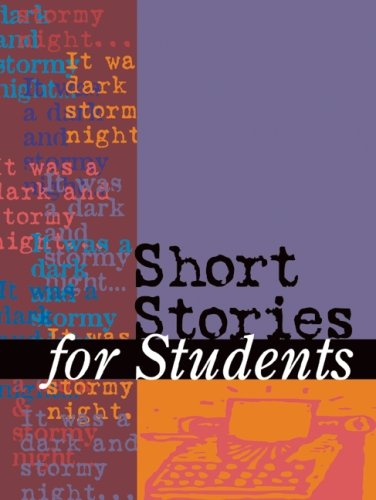All Nonfiction
- Bullying
- Books
- Academic
- Author Interviews
- Celebrity interviews
- College Articles
- College Essays
- Educator of the Year
- Heroes
- Interviews
- Memoir
- Personal Experience
- Sports
- Travel & Culture
All Opinions
- Bullying
- Current Events / Politics
- Discrimination
- Drugs / Alcohol / Smoking
- Entertainment / Celebrities
- Environment
- Love / Relationships
- Movies / Music / TV
- Pop Culture / Trends
- School / College
- Social Issues / Civics
- Spirituality / Religion
- Sports / Hobbies
All Hot Topics
- Bullying
- Community Service
- Environment
- Health
- Letters to the Editor
- Pride & Prejudice
- What Matters
- Back
Summer Guide
- Program Links
- Program Reviews
- Back
College Guide
- College Links
- College Reviews
- College Essays
- College Articles
- Back
The Man Who Was Almost A Man
“Ah mol enough to hava gun. Ahm seventeen. Almost a man. He strode, feeling his long loose-joined limbs. Shucks, a man oughta hava little gun aftah he done worked hard all day” (Wright). The Man Who Was Almost a Man is a short story about a young black man named Dave focused on buying a gun to give him a sense of manhood. The racial themes used by Richard Wright were brought from his personal life. His uncle was murdered by racists in 1916 when he was a young man. Using racial/cultural criticism, a reader can analyze Richard Wright’s The Man Who Was Almost a Man by using the aspects of racial roles, family relationships and language.
Firstly, Wright clearly uses the aspect of racial roles within the short story. An example of this is how black people are referred to in the text even amongst each other. Dave reasons leaving the field by saying, “Whut’s the use of talkin wid em n****** in the field?” (Wright). The use of the word n***** is derogatory, nonetheless Dave doesn’t hesitate to refer to his fellow black men by this slur. This shows the lack of respect given to blacks in this setting. Another example is when Dave walks in to Joe’s store and loses confidence when he enters, “How yuh, Mistah Joe? Aw, Ah don wanna buy nothing. Ah jus wanted t see ef yuhd lemme look at the catlog erwhile” (Wright). What the previous line indicates is that Dave doesn’t have confidence in himself because he feels Joe is superior because of race. Whites were viewed as superior to blacks within the time frame of the story.
To continue, the aspect of family relationships is also clear in the story. Wright believes that men are superior and he gives them the most authority in the family structure. For example he said, “He would do much better by cornering his mother when she was alone. He looked at his father uneasily out of the edge of his eye” (Wright). It is clear from this passage that Dave believes that convincing his dad to give him money is a lot more difficult than convincing his mother so he decides to wait to ask her when she’s alone. Dave’s father plays a traditional role as the disciplinary father. Another example is when Dave is being questioned about Jenny’s death he doesn’t stop lying to everyone until his father asked him what really happened, “Tell whut happened, yuh racal! Tell whut…” (Wright). Dave fears being disciplined by his dad so he begins to cry and admits that he shot Jenny. This shows the power that Dave’s father his within the family structure.
Finally, the aspect of language is also very important to The Man Who Was Almost a Man. The poor vocabulary among blacks at the time can be seen from how they communicate, “Git outta here! Don yuh talk t me bout no gun! Yuh a fool!” (Wright). Dave’s mother’s poor use of grammar and correct spelling shows the lack of education among blacks at the time. The same problem is also the same with Dave himself, “Ain nothing wrong, Ma. Ahm almos a man now. Ah wans a gun” (Wright). This goes to show that the lack of education among blacks at the time was deep rooted because it went down from generation to generation without any real improvement, because of the lack of educational opportunities for blacks. Dave worked rather than attended school.
In conclusion, using racial/cultural criticism, a reader can analyze Richard Wright’s The Man Who Was Almost a Man by using the aspects of racial roles, family relationships and language. This short story is significant because it discusses the aspects of race and culture that a young African American boy experienced during this time period.
Similar Articles
JOIN THE DISCUSSION
This article has 0 comments.

